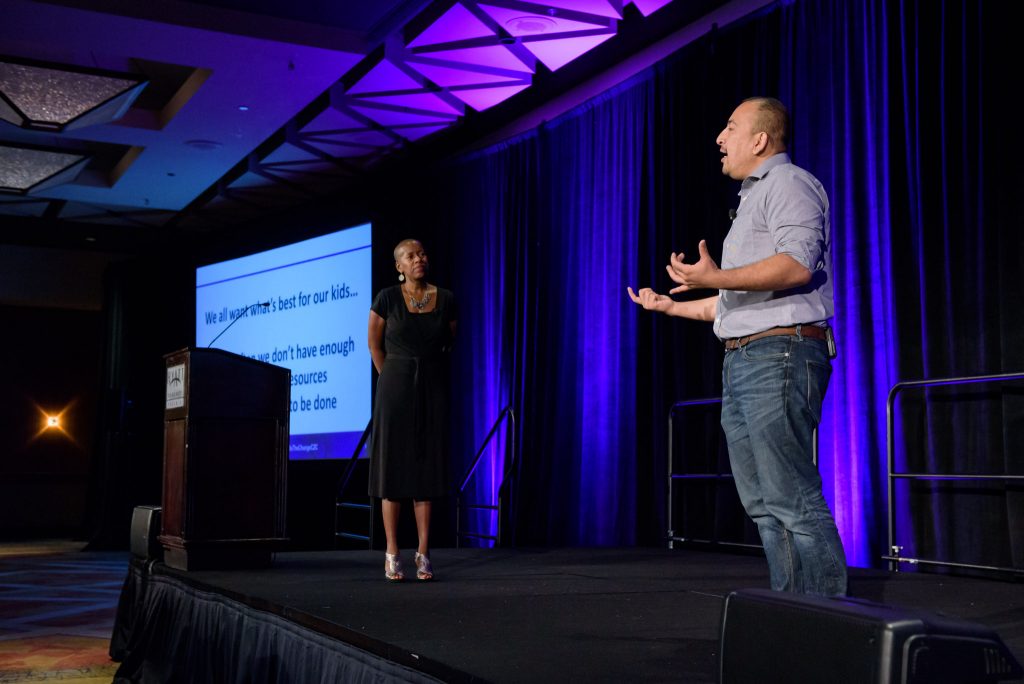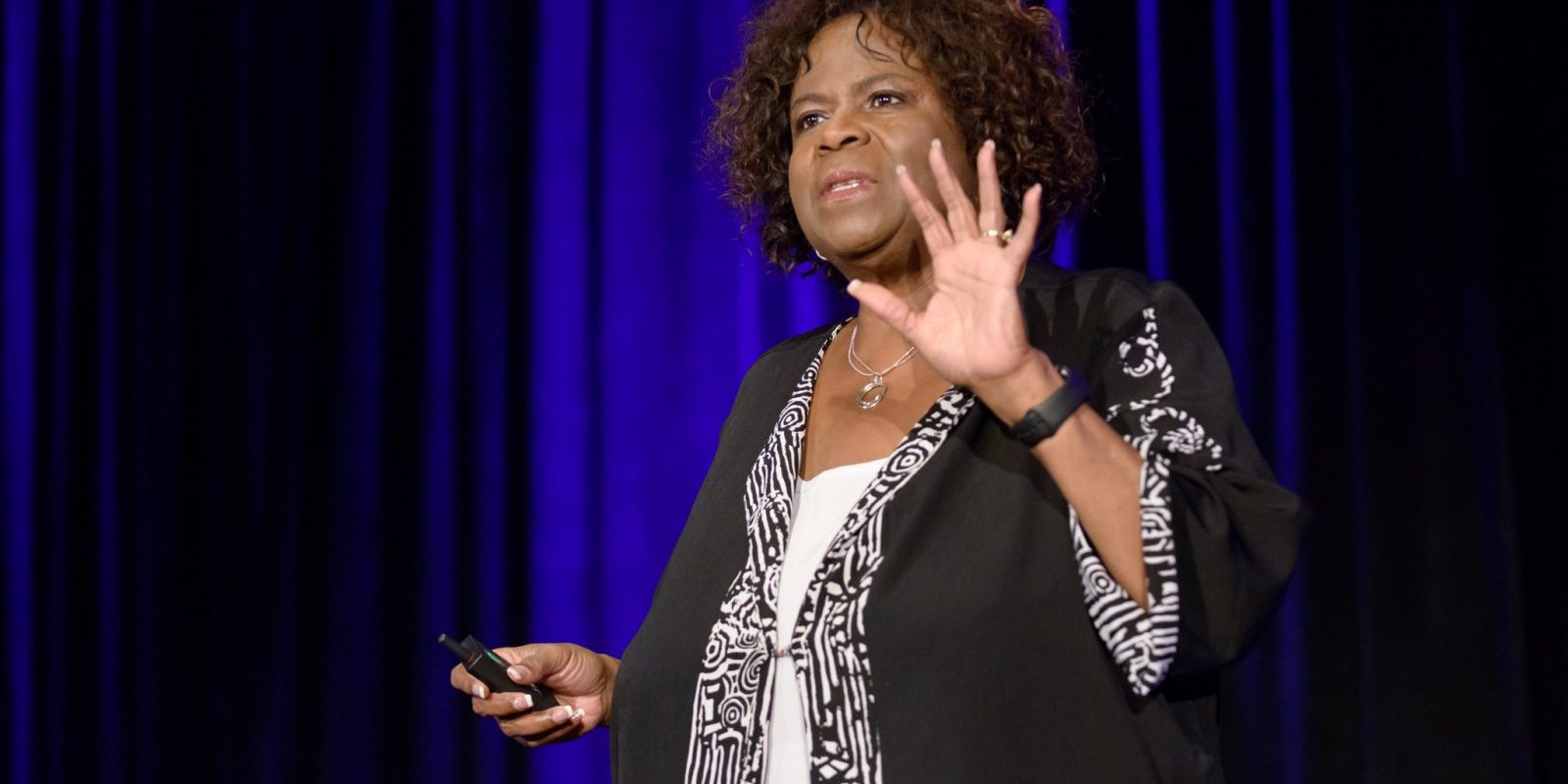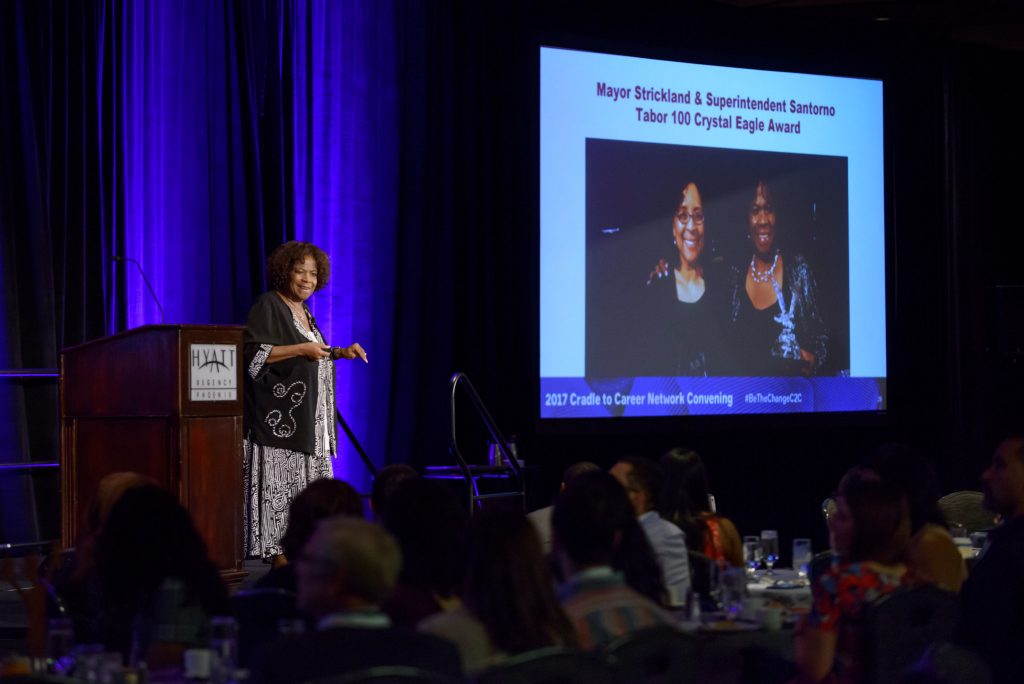Imagine you are a leader in your local community partnership and you face the following news:
USA news reports, “1 in 10 schools are dropout factories.”
34 percent enrollment gap in pre-K. 32 percent of all third-graders read at grade level.
This news can be disheartening for any leader. However, at Be the Change: Getting Results for Every Child, StriveTogether’s 2017 Cradle to Career Network Convening, three changemakers who have made a difference in the lives of children, shared their story of how they used moments of crisis as a catalyst to disrupt inequitable systems and change outcomes for children in their communities.
When calamity occurs, worlds collide. Education practitioners, community leaders, local police enforcement and parents are forced to engage. At this intersection, Michelle Gayles, chief strategy officer at Phoenix Union High School District, encourages leaders to use this moment of crisis as an opportunity for collaboration. Once siloed institutions now can share their stories, raise the conscience of others about the plight facing children and eventually identify strategies for meaningful change.

Intentionality in collaboration is key
Collaboration is not easy. Changemakers leading collaborative networks must be intentional in the work. Partners of Thriving Together, Michelle Gayles and Joseph Larios, co-founder of the Center for Neighborhood Leadership in Phoenix, Arizona, say intentionality must involve:
- Allowing communities to be vulnerable to present their truth. Understanding and empathizing with complex histories of interaction, such as communities of color and local police departments, is essential for open discourse.
- Stepping into the moment as an institution differently. Facilitate dialogue so people feel they can share and challenge the status quo.
- Identifying what you have and do not have. Determine who is already doing the work and how can you use what you have to disrupt inequitable systems?
- Empowering and uplifting parents as changemakers is a tool to influence change. How are you engaging parents’ voice in systems change work?
Low graduation rate demands a systems disruption
Carla Santorno, superintendent of Tacoma Public Schools, calls out what is at stake when a crisis like low graduation rates become your community’s headline in a major newspaper. The most vulnerable student populations (students of color, English language learners, low-income students and homeless students) are at risk.
In the face of this adversity, Santorno passionately exalts, “Poverty is not destiny.” This changemaker in collaboration with Graduate Tacoma, schools and local partners blew up this systemic crisis in Tacoma by:
- Changing the way school was done. Tacoma incorporated innovative school designs and programs, such as the Whole Child Initiative, STEM (science, technology, engineering and math) and International Baccalaureate.
- Creating a strategic plan in partnership with the community that aligns local partners work with the goals of seeing every student graduate from high school.
- Using data to inform decisions and recognizing that every number represents a child who is the center of the work. To call out indicators that are trending in the right direction means kids are getting a better education.
- Creating a system that changes the way business is done — everything from policy to programs to communication to budgeting.
- Creating benchmarks and criteria that defined the success desired. This creates trust in the system and determines if interventions are working.
Analyze, activate and grow
Sagar Desai, chief operating officer of The Commit Partnership, urged other changemakers at the convening to ask what story is revealed when you break down the numbers of your student population on the education pipeline.
The Commit Partnership shared that a plethora of crisis emerged during its analysis, such as enrollment gaps in kindergarten among racial groups, inadequate quality in early childhood education and teacher prep programs, slides in reading between PK to third grade. Upon deeper reflection, larger issues came to light, such as fragmented systems; lack of alignment among charter, public and nonprofit institutions; misaligned philanthropic dollars; and inefficient policies to address current gaps.
Such a crisis called for activation. The Commit Partnership did the following and encouraged other partnerships in:
- Identifying the crisis and the outcome you want to achieve, whether it’s increasing access, improving quality or ensuring awareness or demand.
- Organizing strategy team, action networks and working teams around data, common goals and strategies.
- Aligning and developing funding to support those initiatives.
- Influencing policy by organizing people to demand for change. For example, partnerships can help organize grass-roots messages that can be sent to lawmakers.
Action commit!
Don’t let crisis go to waste. How are you using the crisis in your local community to drive the changes you need to do this work? How are you organizing people to demand for change? How do you take the turmoil and use it to uplift and empower forgotten change agents like parents and community members?








